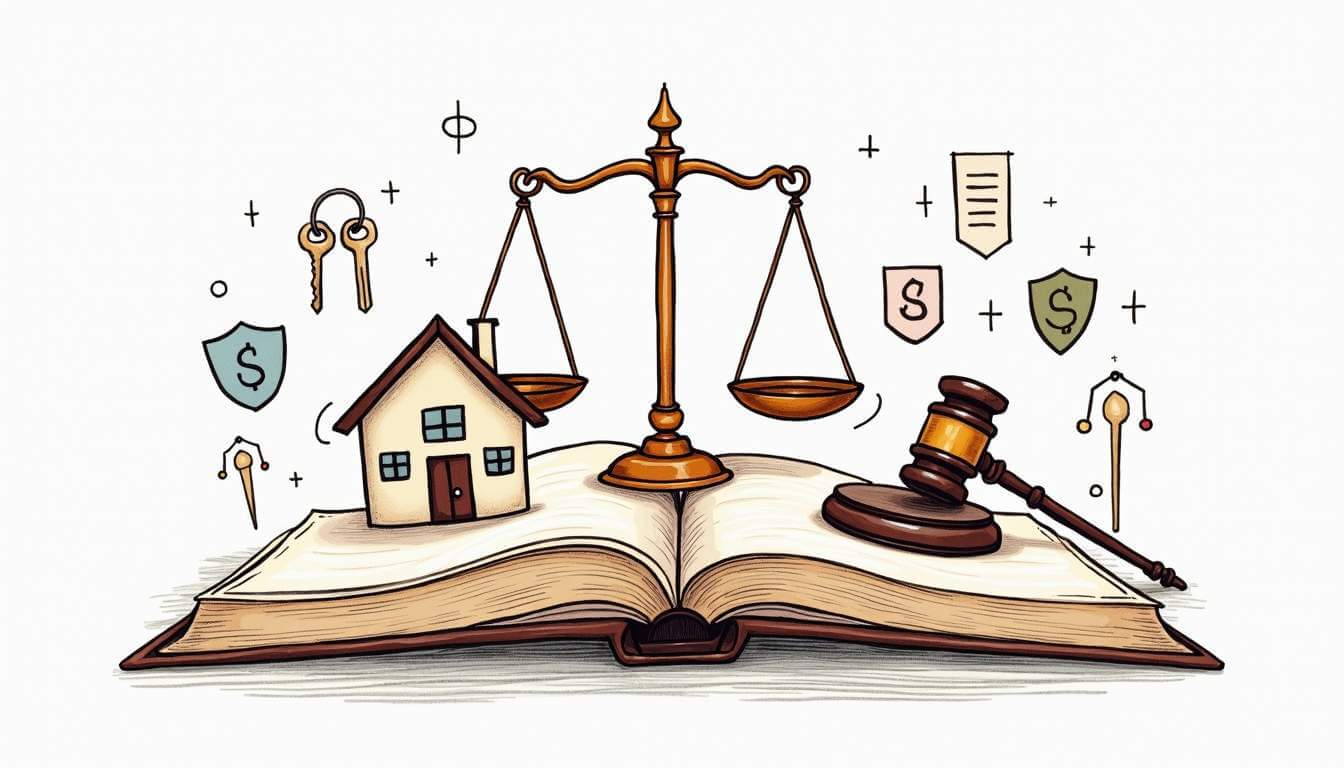In the competitive rental market of the UK, retaining tenants has become more crucial than ever. For landlords, understanding effective tenant retention strategies can lead to a more stable and profitable rental business. This article aims to shed light on why tenant retention matters and how landlords can enhance their relationships with tenants to reduce turnover rates.
Understanding the Importance of Tenant Retention
Tenant retention is vital for landlords not only to ensure consistent income but also to reduce the costs associated with tenant turnover. When a tenant vacates a property, landlords incur costs such as advertising, screening new tenants, and potentially investing in improvements to attract new renters. These expenses can add up quickly, and in competitive rental markets, the pressure to fill vacancies can lead to hasty decisions that may not be in the best interest of the property or the landlord.
Moreover, good tenant retention can foster a sense of community within the property. Long-term tenants create stability, meaning landlords won’t have to deal with the challenges that come with frequent turnover. A tenant who stays longer tends to take better care of the property and is more likely to alert the landlord to maintenance issues before they escalate. This proactive approach not only preserves the property’s value but also enhances the overall living experience for all residents, contributing to a more harmonious environment.
The Financial Benefits of Tenant Retention
From a financial perspective, retaining tenants is significantly more cost-effective than the churn of constantly finding new ones. Studies indicate that the cost of losing a tenant can range from several hundred to thousands of pounds, taking into account vacancy losses and potential renovation costs. By focusing on retaining existing tenants, landlords can increase their return on investment. Furthermore, the financial implications extend beyond immediate costs; a stable tenant base can lead to increased property value over time, as consistent occupancy rates are often viewed favorably by potential buyers and investors.
Additionally, longer tenancy periods can mean more predictable cash flow. When tenants commit to a longer lease, landlords can budget more accurately and reduce the risk of sudden income fluctuations. This stability allows landlords to invest more in the property and cater to the needs of their long-term tenants. For instance, landlords may choose to implement upgrades or amenities that enhance the living experience, thereby attracting even more desirable tenants in the future and creating a cycle of retention and satisfaction.
Enhancing Landlord-Tenant Relationships
A positive landlord-tenant relationship is foundational to retaining tenants. Open lines of communication, trust, and mutual respect can make all the difference. Landlords should regularly check in with their tenants, addressing concerns promptly and guiding them through the rental process with transparency. This can include providing clear information about lease terms, maintenance procedures, and any changes that may affect the tenants. By fostering an environment of collaboration, landlords can create a partnership that benefits both parties.
Moreover, being approachable and supportive can encourage tenants to voice any issues they may encounter, allowing the landlord to resolve them before they become bigger problems. When tenants feel valued and heard, they are more likely to stay in a rental property long-term. Additionally, landlords can consider implementing tenant appreciation initiatives, such as hosting community events or providing small tokens of appreciation, which can further solidify the bond and enhance tenant loyalty. These efforts not only improve tenant satisfaction but can also lead to positive word-of-mouth referrals, ultimately benefiting the landlord’s reputation and future rental prospects.
Key Elements of a Successful Tenant Retention Strategy
There are several key elements that landlords should focus on when crafting a successful tenant retention strategy. These elements revolve around communication, property care, pricing sensibility, and understanding tenant needs.
Regular Communication and Responsiveness
Establishing a communication routine where landlords regularly check in with their tenants, whether through emails, phone calls or community meetings, can foster a sense of belonging. Keeping tenants informed about community events, updates or changes within the property ensures that they feel connected.
Furthermore, responsiveness is crucial. Being quick to address maintenance requests or tenant concerns goes a long way in building trust. A landlord who is seen as reliable will likely cultivate loyal tenants. Additionally, creating a feedback loop where tenants can voice their opinions or suggestions can enhance this relationship. Implementing surveys or suggestion boxes can provide valuable insights into tenant satisfaction and areas for improvement, making tenants feel valued and heard.
Property Maintenance and Upgrades
Regular maintenance is not just an obligation but an opportunity to show tenants that their comfort and safety is a priority. Routine inspections and timely repairs can prevent smaller issues from becoming significant problems.
Investing in upgrades, such as energy-efficient appliances or new fixtures, can improve tenant satisfaction. When tenants see their landlord taking the initiative to enhance their living space, they’re more likely to appreciate their home and decide to stay longer. An attractive, well-maintained environment enhances the overall appeal of the property. Moreover, incorporating eco-friendly practices, like recycling programs or community gardens, can resonate with environmentally conscious tenants, further solidifying their commitment to the property and community.
Fair Rent Pricing and Lease Terms
Fairness in rent pricing plays a significant role in tenant retention. Setting competitive rates based on local market conditions shows that landlords are aware of the economic landscape. Moreover, offering flexible lease terms can accommodate tenants’ varying needs, whether looking for short-term or long-term arrangements.
Transparent rental agreements that outline terms clearly can also prevent misunderstandings and foster trust between landlords and tenants. This clarity helps create a fair rental environment, resulting in happier tenants. Additionally, considering incentives such as loyalty discounts for long-term tenants or referral bonuses for bringing in new tenants can further enhance tenant satisfaction and encourage a sense of community. Such initiatives not only reward existing tenants but also create a positive buzz about the property, attracting potential new residents who value a supportive rental environment.
Legal Aspects of Tenant Retention in the UK
Landlords need to be well-versed in the legal rights of tenants and their obligations to foster a positive and compliant rental experience. Ignorance of these legalities can lead to conflicts and potential loss of tenants.
Understanding Tenant Rights
Tenants in the UK have a range of rights, including the right to live in a safe and habitable home, the right to privacy, and the right to have their deposits protected. Landlords need to understand these rights to build trust and ensure compliance with the law.
By providing resources or information about tenant rights, landlords demonstrate that they are supportive and friendly, which can significantly improve tenant retention rates. An informed tenant is likely to have a positive experience, leading to longer stays.
Legal Obligations of Landlords
Landlords must also fulfill various obligations, including ensuring the property meets health and safety standards and carrying out necessary checks such as gas safety checks annual inspections. Violating these obligations can jeopardize tenant retention and even risk legal repercussions.
Upholding these responsibilities not only protects tenants but also builds a reputation as a reliable landlord, further encouraging tenants to remain in their homes.
Implementing Tenant Retention Strategies
Once landlords understand the importance of tenant retention, they must develop and implement effective strategies tailored to their properties and tenant demographics. A well-thought-out plan can have far-reaching positive effects.
Developing a Tenant Retention Plan
Creating a structured tenant retention plan involves identifying areas of improvement based on tenant feedback and market research. This plan should outline steps to enhance communication, maintenance and tenant services.
Landlords could consider engaging in regular surveys to capture tenant satisfaction and gain insights into areas where improvements can be made. A proactive approach demonstrates a commitment to tenant welfare and helps create an environment conducive to long tenancies.
Utilizing Technology for Tenant Retention
Technology can enhance tenant retention strategies through the use of property management software, tenant portals, and communication tools. Tools that allow digital scheduling for maintenance requests can streamline responsiveness and efficiency.
Furthermore, utilizing platforms for online payments can simplify rent transactions, increasing tenant satisfaction regarding convenience. Embracing technology can elevate the overall rental experience.
Measuring the Success of Your Tenant Retention Strategies
Finally, it is crucial to measure and evaluate the success of the tenant retention strategies in place. Doing so helps landlords adapt and refine their approaches to remain competitive.
Key Performance Indicators for Tenant Retention
Some of the key performance indicators (KPIs) that landlords can track include tenant turnover rates, tenant satisfaction scores, and the average length of tenancy. By collecting data surrounding these KPIs, landlords can identify trends and areas for improvement.
Monitoring these indicators regularly allows landlords to gauge the immediate impact of their strategies and prompt necessary changes.
Adjusting Your Strategies Based on Feedback and Results
Lastly, engaging with tenant feedback and adjusting strategies accordingly ensures that landlords remain in tune with their tenant’s needs. This adaptability can be the difference between retaining good tenants and facing costly turnover.
By actively seeking feedback through surveys and informal discussions, landlords can create a cycle of improvement, continuously enhancing the rental experience.
In conclusion, effective tenant retention strategies are multifaceted, involving communication, understanding legal obligations, and regularly assessing what works and what doesn’t. By implementing these practices, UK landlords can foster an environment of stability and satisfaction, benefiting both themselves and their tenants.
Streamline Your Tenant Retention Efforts with COHO
As you’ve learned, effective tenant retention is key to a successful rental business. COHO’s innovative property management software can help you put these strategies into action. With tools designed for HMOs, single-lets, student HMOs, and more, COHO simplifies your workflow, enabling better communication, maintenance tracking, and overall tenant satisfaction. Ready to enhance your property management and retain more tenants? Try COHO for Free today and experience the difference it can make for your rental portfolio.
In the competitive rental market of the UK, retaining tenants has become more crucial than ever. For landlords, understanding effective tenant retention strategies can lead to a more stable and profitable rental business. This article aims to shed light on why tenant retention matters and how landlords can enhance their relationships with tenants to reduce turnover rates.
Understanding the Importance of Tenant Retention
Tenant retention is vital for landlords not only to ensure consistent income but also to reduce the costs associated with tenant turnover. When a tenant vacates a property, landlords incur costs such as advertising, screening new tenants, and potentially investing in improvements to attract new renters. These expenses can add up quickly, and in competitive rental markets, the pressure to fill vacancies can lead to hasty decisions that may not be in the best interest of the property or the landlord.
Moreover, good tenant retention can foster a sense of community within the property. Long-term tenants create stability, meaning landlords won’t have to deal with the challenges that come with frequent turnover. A tenant who stays longer tends to take better care of the property and is more likely to alert the landlord to maintenance issues before they escalate. This proactive approach not only preserves the property’s value but also enhances the overall living experience for all residents, contributing to a more harmonious environment.
The Financial Benefits of Tenant Retention
From a financial perspective, retaining tenants is significantly more cost-effective than the churn of constantly finding new ones. Studies indicate that the cost of losing a tenant can range from several hundred to thousands of pounds, taking into account vacancy losses and potential renovation costs. By focusing on retaining existing tenants, landlords can increase their return on investment. Furthermore, the financial implications extend beyond immediate costs; a stable tenant base can lead to increased property value over time, as consistent occupancy rates are often viewed favorably by potential buyers and investors.
Additionally, longer tenancy periods can mean more predictable cash flow. When tenants commit to a longer lease, landlords can budget more accurately and reduce the risk of sudden income fluctuations. This stability allows landlords to invest more in the property and cater to the needs of their long-term tenants. For instance, landlords may choose to implement upgrades or amenities that enhance the living experience, thereby attracting even more desirable tenants in the future and creating a cycle of retention and satisfaction.
Enhancing Landlord-Tenant Relationships
A positive landlord-tenant relationship is foundational to retaining tenants. Open lines of communication, trust, and mutual respect can make all the difference. Landlords should regularly check in with their tenants, addressing concerns promptly and guiding them through the rental process with transparency. This can include providing clear information about lease terms, maintenance procedures, and any changes that may affect the tenants. By fostering an environment of collaboration, landlords can create a partnership that benefits both parties.
Moreover, being approachable and supportive can encourage tenants to voice any issues they may encounter, allowing the landlord to resolve them before they become bigger problems. When tenants feel valued and heard, they are more likely to stay in a rental property long-term. Additionally, landlords can consider implementing tenant appreciation initiatives, such as hosting community events or providing small tokens of appreciation, which can further solidify the bond and enhance tenant loyalty. These efforts not only improve tenant satisfaction but can also lead to positive word-of-mouth referrals, ultimately benefiting the landlord’s reputation and future rental prospects.
Key Elements of a Successful Tenant Retention Strategy
There are several key elements that landlords should focus on when crafting a successful tenant retention strategy. These elements revolve around communication, property care, pricing sensibility, and understanding tenant needs.
Regular Communication and Responsiveness
Establishing a communication routine where landlords regularly check in with their tenants, whether through emails, phone calls or community meetings, can foster a sense of belonging. Keeping tenants informed about community events, updates or changes within the property ensures that they feel connected.
Furthermore, responsiveness is crucial. Being quick to address maintenance requests or tenant concerns goes a long way in building trust. A landlord who is seen as reliable will likely cultivate loyal tenants. Additionally, creating a feedback loop where tenants can voice their opinions or suggestions can enhance this relationship. Implementing surveys or suggestion boxes can provide valuable insights into tenant satisfaction and areas for improvement, making tenants feel valued and heard.
Property Maintenance and Upgrades
Regular maintenance is not just an obligation but an opportunity to show tenants that their comfort and safety is a priority. Routine inspections and timely repairs can prevent smaller issues from becoming significant problems.
Investing in upgrades, such as energy-efficient appliances or new fixtures, can improve tenant satisfaction. When tenants see their landlord taking the initiative to enhance their living space, they’re more likely to appreciate their home and decide to stay longer. An attractive, well-maintained environment enhances the overall appeal of the property. Moreover, incorporating eco-friendly practices, like recycling programs or community gardens, can resonate with environmentally conscious tenants, further solidifying their commitment to the property and community.
Fair Rent Pricing and Lease Terms
Fairness in rent pricing plays a significant role in tenant retention. Setting competitive rates based on local market conditions shows that landlords are aware of the economic landscape. Moreover, offering flexible lease terms can accommodate tenants’ varying needs, whether looking for short-term or long-term arrangements.
Transparent rental agreements that outline terms clearly can also prevent misunderstandings and foster trust between landlords and tenants. This clarity helps create a fair rental environment, resulting in happier tenants. Additionally, considering incentives such as loyalty discounts for long-term tenants or referral bonuses for bringing in new tenants can further enhance tenant satisfaction and encourage a sense of community. Such initiatives not only reward existing tenants but also create a positive buzz about the property, attracting potential new residents who value a supportive rental environment.
Legal Aspects of Tenant Retention in the UK
Landlords need to be well-versed in the legal rights of tenants and their obligations to foster a positive and compliant rental experience. Ignorance of these legalities can lead to conflicts and potential loss of tenants.
Understanding Tenant Rights
Tenants in the UK have a range of rights, including the right to live in a safe and habitable home, the right to privacy, and the right to have their deposits protected. Landlords need to understand these rights to build trust and ensure compliance with the law.
By providing resources or information about tenant rights, landlords demonstrate that they are supportive and friendly, which can significantly improve tenant retention rates. An informed tenant is likely to have a positive experience, leading to longer stays.
Legal Obligations of Landlords
Landlords must also fulfill various obligations, including ensuring the property meets health and safety standards and carrying out necessary checks such as gas safety checks annual inspections. Violating these obligations can jeopardize tenant retention and even risk legal repercussions.
Upholding these responsibilities not only protects tenants but also builds a reputation as a reliable landlord, further encouraging tenants to remain in their homes.
Implementing Tenant Retention Strategies
Once landlords understand the importance of tenant retention, they must develop and implement effective strategies tailored to their properties and tenant demographics. A well-thought-out plan can have far-reaching positive effects.
Developing a Tenant Retention Plan
Creating a structured tenant retention plan involves identifying areas of improvement based on tenant feedback and market research. This plan should outline steps to enhance communication, maintenance and tenant services.
Landlords could consider engaging in regular surveys to capture tenant satisfaction and gain insights into areas where improvements can be made. A proactive approach demonstrates a commitment to tenant welfare and helps create an environment conducive to long tenancies.
Utilizing Technology for Tenant Retention
Technology can enhance tenant retention strategies through the use of property management software, tenant portals, and communication tools. Tools that allow digital scheduling for maintenance requests can streamline responsiveness and efficiency.
Furthermore, utilizing platforms for online payments can simplify rent transactions, increasing tenant satisfaction regarding convenience. Embracing technology can elevate the overall rental experience.
Measuring the Success of Your Tenant Retention Strategies
Finally, it is crucial to measure and evaluate the success of the tenant retention strategies in place. Doing so helps landlords adapt and refine their approaches to remain competitive.
Key Performance Indicators for Tenant Retention
Some of the key performance indicators (KPIs) that landlords can track include tenant turnover rates, tenant satisfaction scores, and the average length of tenancy. By collecting data surrounding these KPIs, landlords can identify trends and areas for improvement.
Monitoring these indicators regularly allows landlords to gauge the immediate impact of their strategies and prompt necessary changes.
Adjusting Your Strategies Based on Feedback and Results
Lastly, engaging with tenant feedback and adjusting strategies accordingly ensures that landlords remain in tune with their tenant’s needs. This adaptability can be the difference between retaining good tenants and facing costly turnover.
By actively seeking feedback through surveys and informal discussions, landlords can create a cycle of improvement, continuously enhancing the rental experience.
In conclusion, effective tenant retention strategies are multifaceted, involving communication, understanding legal obligations, and regularly assessing what works and what doesn’t. By implementing these practices, UK landlords can foster an environment of stability and satisfaction, benefiting both themselves and their tenants.
Streamline Your Tenant Retention Efforts with COHO
As you’ve learned, effective tenant retention is key to a successful rental business. COHO’s innovative property management software can help you put these strategies into action. With tools designed for HMOs, single-lets, student HMOs, and more, COHO simplifies your workflow, enabling better communication, maintenance tracking, and overall tenant satisfaction. Ready to enhance your property management and retain more tenants? Try COHO for Free today and experience the difference it can make for your rental portfolio.











